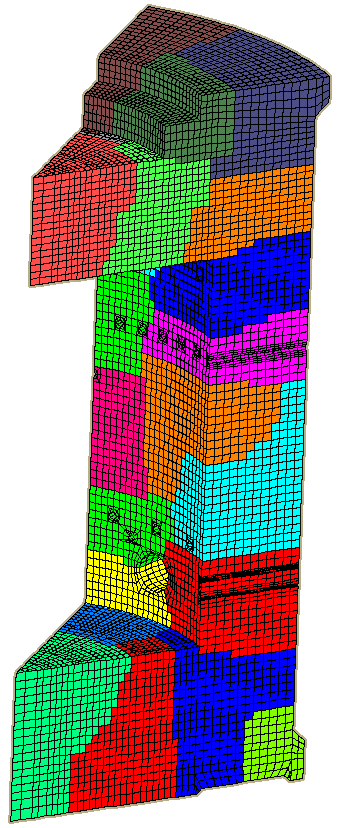 SIFEL Home page
SIFEL Home page
SIFEL - SImple Finite ELements
Convertor
Software converts topology form T3D
into SIFEL format, from T3D to GiD format and
from SIFEL format to GiD format. The syntax for use is following
./convertor input_file.con
input_file.con includes keywords for conversion of the topology from
one format to another one. The file consists of two sections - the first section
which includes description of the input topology and the second section which includes description
of output topology.The structure of the first section is the following:
topology_file file.txt - file with input topology
mesh_format {sifel | t3d} - type of the input file where
t3d- output form T3D mesh generator.sifel- sifel topology format
edge_numbering 1The structure of the second section is the following:
output_file_name out_top.xub, whereout_top.xubis the name of output file/files from convertor. In the case of conversion of topology for parallel computing, the output file names will be in the formout_top1.xub - out_top??.xub, where??is number of files.conversion_type {T3D2SIFEL| T3D2GID| SIFEL2GID}whereT3D2SIFELConversion creates SIFEL topology format form T3D topology format. In the case of the 3D elements, the nodes on elements are reordered into ordering using in SIFEL format. There are no limitation on the type of the output suffix of filename.T3D2GIDConversion creates GID topology format form T3D topology format. There are limitation in the case of the suffix of filename. The suffix of filename will be always .mshSIFEL2GIDConversion creates GID topology format form SIFEL topology format. There are limitation in the case of the suffix of filename. The suffix of filename will be always .msh
processing {seq | paral}whereseq- input file consists of sequential topologyparal- input file consists of parallel topology, in such a case the output file names will have above mentioned format. In the case of parallel processing the next line is
number_of_files ndom, wherendomis the number of files (subdomains).
Example for sequential mesh. The file most.txt include 3D mesh generated by T3D. The content of the file most.txt is
here.
begsec_files
topology_file most.txt
mesh_format t3d
edge_numbering 1
endsec_files
begsec_convert
output_file_name most.top
conversion_type T3D2SIFEL
processing seq
endsec_convert
Example for decomposed meshes. The files file1.top,
file2.top, file3.top and
file4.top include meshes in SIFEL topology format. File
convert.pr contains:
begsec_files
topology_file file.top
mesh_format t3d
edge_numbering 1
endsec_files
begsec_convert
output_file_name file.msh
conversion_type SIFEL2GID
processing paral
number_of_files 4
endsec_convert
Written by Jaroslav Broz 2010-11-11
